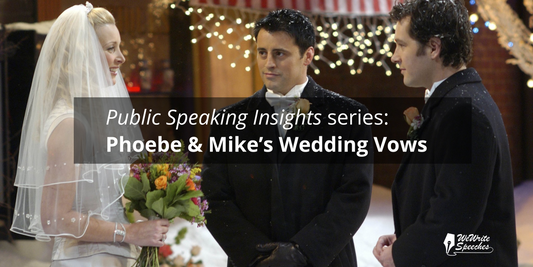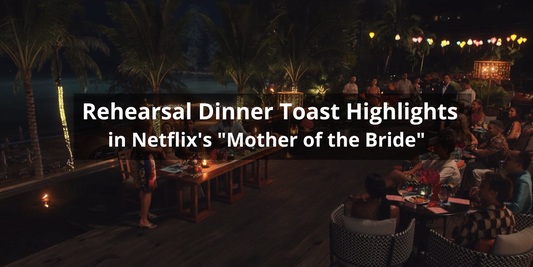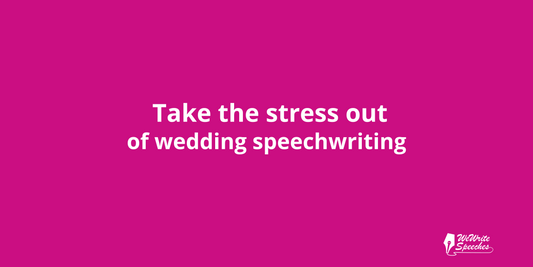Welcome back to our series, "Wedding Speeches: Lessons from the Limelight". After exploring the theatrical world, today's focus shifts to the exhilarating realm of improv. Improv, or improvisational theater, thrives on spontaneity, adaptability, and audience interaction — three principles that can remarkably enhance the delivery and impact of wedding speeches. But be warned – these techniques are for advanced speakers only.
Overview of Improv Principles
Spontaneity: The essence of improv lies in its unscripted nature. Performers often create scenes and dialogues on the spot, guided only by audience suggestions. This spontaneity can bring a lively and genuine feel to your speech, making it more relatable and engaging.
Adaptability: Improv actors are masters of adaptation, skilfully steering their performance based on the audience's reactions and the unfolding scene. For wedding speakers, being adaptable means gracefully incorporating last-minute changes or feedback into your speech.
Audience Interaction: A cornerstone of improv, interaction with the audience makes each performance unique. Incorporating elements of this can transform a wedding speech from a monologue into a dynamic dialogue with the audience, making it more memorable.
When to use Improv Techniques
Improv techniques are helpful in several circumstances, for example:
- Callbacks: In the previous blog in this series, we wrote about planned callbacks. The other type is improvised callbacks, which can only be done by a speaker with a particular combination of skills. An example of an improvised callback would be if the bride's father teased the groom about his golf skills, and the groom then responded with a golf-related wisecrack of his own. The groom would unlikely know what he would be teased about upfront, so such a response is likely to be improvised.
- Unexpected moments: these can arise during any speech — perhaps a playful interruption from a child or an unforeseen emotional response. Improv techniques teach us to embrace these moments rather than fear them.
Which Improv Techniques to Use
Here are some improv strategies that can enhance your ability to adapt and engage during a wedding speech:
- Embrace the Unexpected: Improv thrives on the unexpected. Instead of shying away from surprises or mistakes, embrace them as part of your speech. This could turn a potentially awkward moment into a memorable highlight.
- Build on the Present Moment: This technique involves accepting the current situation (whatever interruption or unexpected event occurs) and incorporating it into your speech. This shows your ability to stay present and engaged with your surroundings.
- Three-Second Rule: In improv, performers are encouraged to pause for three seconds before responding. This brief moment allows you to collect your thoughts and react more thoughtfully, which can be particularly useful if an unexpected comment or reaction throws you off.
- Active Listening: Improv actors listen intently to their partners as it informs their next move. In the context of a wedding speech, listen to the mood and tone of the event and what previous speakers say. This attentiveness can help you adjust your speech's pacing, tone, or content on the fly, ensuring it resonates well.
| Pro tip: active listening is the most essential improv technique for wedding speakers. |
Exercises to Improve Quick Thinking and Spontaneity
If you want to develop your improv chops, you can use some of these techniques.
-
The Alphabet Game: Practice a mock speech where each new sentence starts with the subsequent letter of the alphabet. This game enhances your ability to think quickly and creatively, which is valuable when adapting your speech spontaneously.
-
Emotion Rollercoaster: Recite your speech but change your emotional delivery as directed by a friend or family member (e.g., happy, sad, surprised). This exercise prepares you to maintain composure and adapt your delivery in response to unexpected audience reactions.
- Story Building: With a group, create a story where each person adds a sentence. This boosts your creativity and improves your ability to build on previous content, a valuable skill for when speeches reference one another.
Conclusion
Incorporating improv techniques into your wedding speech preparation can enhance your delivery if you have the patience and determination to develop the skills required. It equips you to handle surprises gracefully, engage deeply with your audience, and inject a lively spontaneity into your words.
But remember, the goal of a wedding speech is not just to share a message but to connect and create a moment of joy and unity. Creating call-backs can be more reliably achieved by good planning than relying on your improvisational skills. So it would be best if you didn’t put too much pressure on yourself and put some effort into planning. If you can improvise something good during a speech, that’s a bonus.
| Pro tip: planned callbacks are easier to pull off than improvised ones. So, you should find out what topics earlier speakers will cover and consider incorporating some callbacks to their content. |
Stay tuned for our next post, where we will dive into the world of stand-up comedy and uncover how its principles can add humor and charm to your wedding speeches, ensuring they leave a lasting impression.




